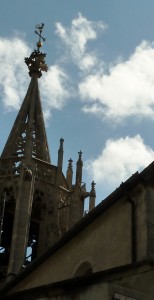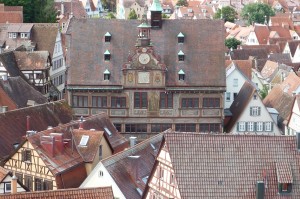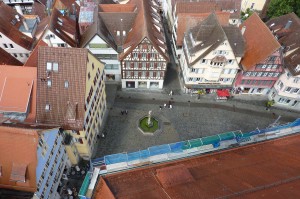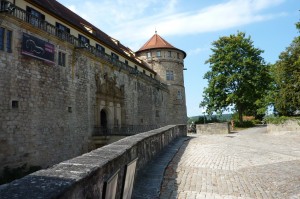I have been looking forward to going to Germany for a very long time, basically ever since I started taking German as a freshman in high school. Well, now that I have the opportunity to be here, it is basically a dream come true. However, there are some things that one notices as an American that either take a while to get used to, or to acknowledge as normal for Europeans. I expected this before my airplane even landed in Europe, though, because I know that most of what Europe has in common with the United States can be counted on one hand (maybe two). The differences can be put into general categories, such as culture, architecture, and language. These differences are probably what will make up the most exciting parts of my time here. For example, most Europeans speak three languages (including their native language, and probably English) if not more. But it’s ok if they don’t speak English, because why else would I take German for six years and study abroad in Germany for a year if I didn’t want to speak a lot of German while I am here?! Of course I do not plan on spending the whole year in Germany, so culture and architecture will have more of a prominent role during my travels through countries like Italy, Spain, France, England, et cetera.
From country to country, cultures may not differ so much, but compared to the United States there is a pretty big difference. Americans are primarily all about Thanksgiving, Christmas, and (for some) St. Patrick’s Day. Europeans, however, have a lot of different festivals, traditions, and important seasonal times like Spargelzeit (asparagus season) in Germany, and the running of the bulls, which is most famously held in Spain. Differences in architectural style are quite apparent from country to country, though, especially when traveling from North to South.
the United States there is a pretty big difference. Americans are primarily all about Thanksgiving, Christmas, and (for some) St. Patrick’s Day. Europeans, however, have a lot of different festivals, traditions, and important seasonal times like Spargelzeit (asparagus season) in Germany, and the running of the bulls, which is most famously held in Spain. Differences in architectural style are quite apparent from country to country, though, especially when traveling from North to South.
In cities like Florence, one sees Renaissance architecture literally towering over the city with buildings like the Basilica di Santa Maria del Fiore (commonly referred to as “the Duomo”), one of my favorite buildings in Europe. However, if one goes to London, then Neo-Gothic architecture is seen in buildings like the Palace of Westminster. Different architectural styles can convey completely different feelings and time periods. For example, if one looks at Neuschwanstein Castle in Bavaria, even though it was built in the late nineteenth century, one typically associates a fairytale with its appearance, so it is very much fantastical creation. The Duomo causes me to think about Leonardo da Vinci and humanism coming into existence in art. However, when one sees the Palace at Westminster one is almost overwhelmed with the amount of detail, and is almost forced to think of a monarchy and ornate crowns.
Even with giving just a few examples, one can see how there is so much to experience by traveling just a couple hundred miles in any direction. In Europe, having a building that is three-hundred years old is completely ordinary, and citizens care a lot about their traditions and culture. Experiencing all of these things might be overwhelming for most Americans, but even if it is a lot to handle it will still be worth the while to be submerged up to my neck in a new environment that “spoiled” Americans can’t really experience anywhere in the United States. I guess what I am really looking forward to is having a new experience every day, while being placed in the middle of a real-life history book. The best part is that I don’t have to read hundreds of pages to know different time periods, because I can simply travel to different locations to experience them.
By John Ertel, more blogs to come soon!



Leave a Reply